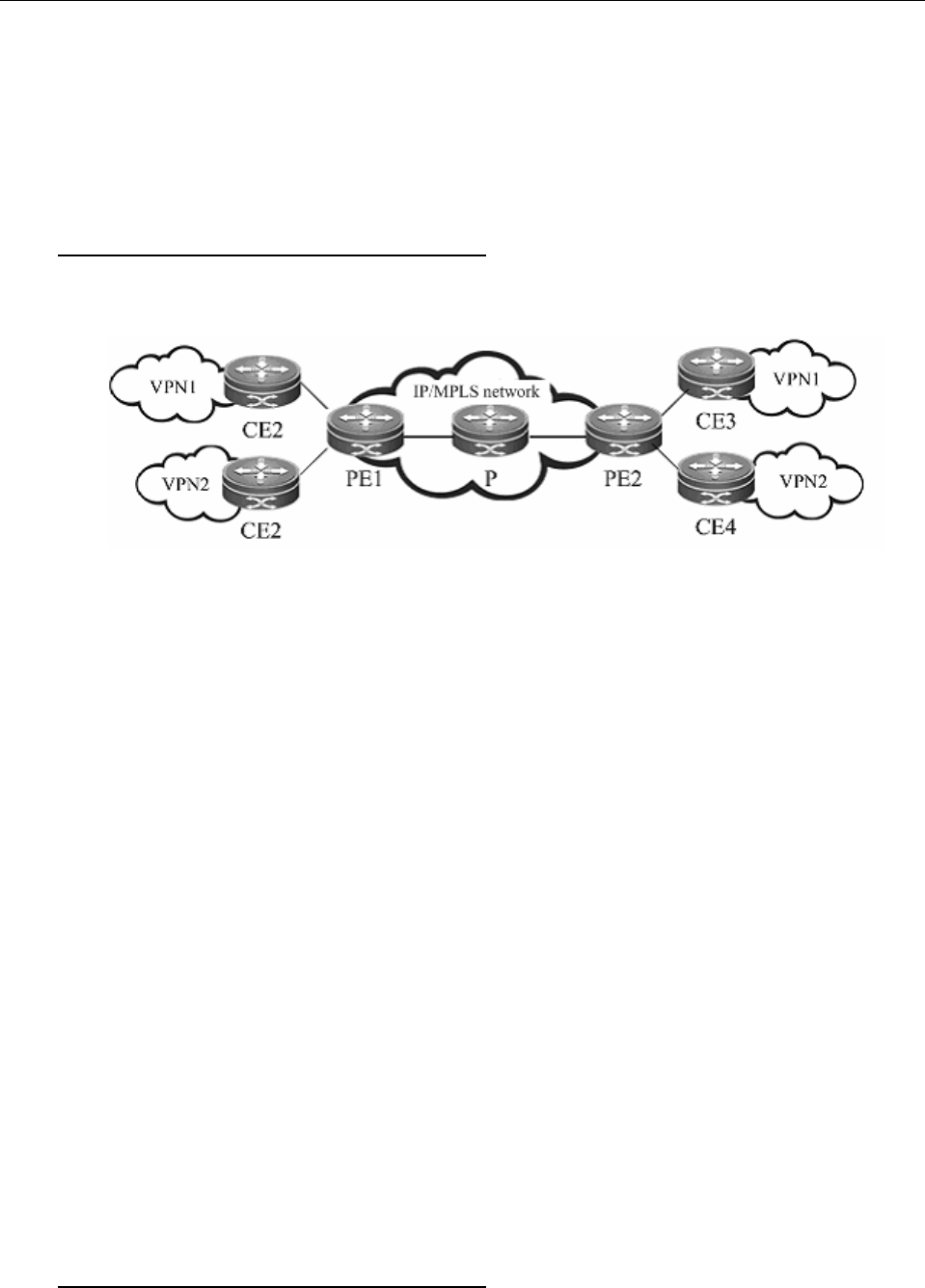
DES-7200 Configuration Guide Chapter 2 Configuring BGP IP VPN
2-2
3) Support MP-BGP and extended BGP attributes to transmit VPN routes and carry VPN
attributes and labels.
4) Manage VPN routes to set up multiple routing tables and maintain VPN routes.
2.1.1 Components of a BGP/MPLS
VPN
A BGP/MPLS VPN model consists of three components, as shown in the following figure.
Figure 5 Basic components of a VPN
CE
Located at customer edge, a CE logically belongs to a user VPN. One interface on the CE is
directly connected to the PE device. The CE can be a host, router, or switch that may not support
MPLS. As shown in the figure, CE1, CE2, CE3, and CE4 are CE devices.
PE
A PE is an edge device on the SP backbone network. It can be a router, an ATM switch or an FR
switch, as shown in PE1 and PE2 in the figure. A PE logically belongs to the service provider and
is directly connected to a CE. You can connect one PE to multiple CEs. The PE is mainly
responsible for receiving the VPN information from CEs and transmitting the information to other
PEs, or receiving the VPN information from other PEs and sending it to the CEs. The PEs should
support MPLS.
P
The Provider Router (P) is a core device on the SP backbone network, as shown in P1, P2, and
P3 in the figure. The P is not connected to CEs. It is responsible for routing and rapid forwarding.
As a device on the core MPLS backbone network, the P should support MPLS. The P knows the
routes to any destination on the backbone network but does not know the routes to a VPN.
2.1.2 VRF
VRF


















